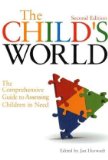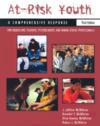How Children Relate To Storybook Characters
September 2007 - A study from University of Waterloo researchers Daniela O'Neill and Rebecca Shultis published in Developmental Psychology used an innovative approach to evaluate young children's storytelling ability and found that they are able to immerse themselves in the thoughts and feelings of fictional characters.
Daniela O'Neill, associate professor of developmental psychology explained:
"Children around the ages of three to five are fairly limited in their verbal abilities, and many previous studies have relied on methods requiring children to tell a story orally, potentially underestimating what they can do. I believe children as young as age three to five are developing in important ways with respect to their narrative ability, we just need new ways to look at it."
"In essence, rather than looking at how children are able to tell stories, it looked at how children understand stories, and whether, like adults, children build up a 'mental model' of the story. By this, I mean, are children, like adults, able to build up a model of the story in their mind and 'step into the mind,' so to speak, of a character. It turns out, from the results of our study, that indeed this is one important way in which children appear to be developing with respect to their understanding of stories during the preschool years."
Researchers asked children to listen to a story about a character in one location thinking about doing something in another.
Daniela O'Neill said:
"Tracking the thoughts of characters to different locations they are thinking about is something we do very easily as adults and really is an impressive perspective-taking feat. But can children also do this? It turns out that five-year-olds can, pretty much like adults, but that three-year-olds have much more difficulty doing this."
Researchers found that the youngest children were able to track a character that physically moved between two locations but not if the change only happened in the character's mind. Children were shown models of a barn and a field, both locations containing a cow. They were told that the character was in the barn, but was thinking about feeding the cow in the field. Children were then asked to point to the cow.
Daniela O'Neill explained:
"This is an ambiguous request, since there are two cows present. But we hypothesized that if children were tracking the thought of the character to the new thought-about location (the field), then they would point to the cow there. If they were only able to think about the character where the character physically is, then they would point to the cow in the physical location (the barn)."
Researchers found that five-year-olds pointed to the cow in the field but three-year-olds pointed to the cow in the barn, only switching if told the character had actually gone to the new location.
Researchers conclude that these findings potentially offer insight into some of the difficulties and differences in perspective-taking ability that may impede comprehension.
Daniela O'Neill said:
"We are excited about these results because they help us to better understand how children's narrative ability is changing and developing very early on in a new way we didn't know about before when studies focused mainly on having children tell stories which they are really not very good at yet. Children with delays in their language use also often have difficulty with comprehending and producing narratives. This can become quite an issue once children reach school and are faced with many more tasks that require good story comprehension skills."
Related articles
 The Child's World: The Comprehensive Guide to Assessing Children in Need At-risk Youth: A Comprehensive Response for Counselors, Teachers, Psychologists and Human Services Professionals |